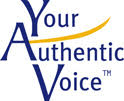
Photo courtesy of Flickr user Olivia Chow
You know that moment? The one when you’ve really made the connection? You feel it, don’t you? The question is, what can you do to foster that connection?
Connecting is an art. We’re talking about human beings here, and no two of us are alike, at least on the surface. Underneath, we all want the same things — to be heard, seen and loved. When you can communicate your caring through your listening and sharing, you can create a connection that is palpable and meaningful.
To get there, here’s the first step: you go first. Yup, that’s the key. You first. If you want connection, you need to open yourself up and invite it in. As an audience member, or someone on the other end of the phone, I’ll feel that.
Here are some tips to help you get there:
1. Know your intention. Why do you want to connect? What does that mean to you? Who is this audience to you? Why do you care? What do you want for them? These questions will help you frame your presentation in a way that is both meaningful to you and respectful of your audience. It will help you establish your tone and your demeanor.
Your audience wants to know you care before they will care about what you say. They are also deciding, subconsciously, whether you are friend or foe. They will know that from your facial expressions, your body language, and most importantly, your energy. We’ve all had that moment when someone enters our space who doesn’t feel good — those times when you get into an elevator and decide to get right back out. That’s what I’m talking about. We pick things up. You want to make sure your audience is picking up your care, your enthusiasm and your friendliness. You are not a threat — you are a friend.
2. Be present. While you’re speaking, slow down, pay attention, and listen with your whole body. That might sound odd. That means use all of your senses to pick up what is happening. This requires you to be present. When you take the time to do this, your audience will let you know when they are with you and when they aren’t.
Here’s the caveat: sometimes we can’t tell by body language alone.
Some people are not as expressive. I once spoke before a large audience of financial experts. If I were assessing my connection based on body language, I would have thought I’d bombed! In fact, I did think that, until I saw my evaluation results — 4.8 out of 5.0. These folks thoroughly enjoyed and learned from my presentation — they just didn’t show it.
I’ve also been surprised when the one person in the audience I thought was not at all into what I had to say came up to me afterward and expressed their appreciation. I’ll never forget presenting to a roomful of project managers. This one gentleman, who looked very “military” to me, came up after the speech and in a monotone voice, lacking any emotion, said, “That was wonderful. Thank you so much, I learned something today.” Hmmm . . . you could have knocked me over with a feather. (Turns out he was a retired Marine officer.)
So, while you can’t always be sure, if you feel you’re not connecting, or are losing your connection:
- Ask the individual or ask the audience what’s up.
- Ask a question that’s pertinent to your subject. Get your audience involved.
- Get them out of their seats and doing something physical.
- Change your dynamic. Make the connection with eye contact and appropriate touch.
- Take a break, turn on some music, and check in with a couple of folks to get some information.
3. Take a risk. It’s easy to get stuck in a rut, or go back to a tried-and-true open or format. Hey, we’re creatures of habit and if it ain’t broke . . . right? Actually, sometimes the wisest thing you can do is break it. Whether that means adding a new theatrical technique, or sharing a personal story, or opening yourself up to questions for the first time, stepping out on that ledge can be the very thing that will provide the connection.
We love to watch others be brave. We love it because we want to be brave too, and we are inspired to believe we can.
When you take a risk, you give me permission to take a risk, and I’m going to love you for that. Which is not to say you won’t have the one skeptic in the group who will challenge you or criticize you. That can and does happen. That’s part of taking a risk. But you know what? It’s going to happen anyway, so go ahead and take a risk. Life is much more interesting when we choose to get out of our comfort zones and take risks. And it creates the space for connection in a real and meaningful way.
The art of connecting is just that — it’s an art. Experiment with it. Learn from others. Find out what works for you. And most of all, enjoy. As always, I would love to support you! I can be reached at Andrea@AndreaBeaulieu.com.

Leave A Comment